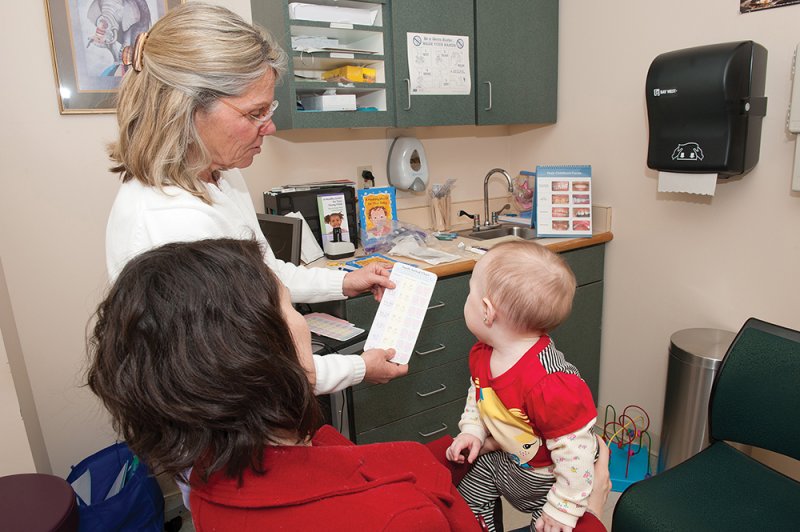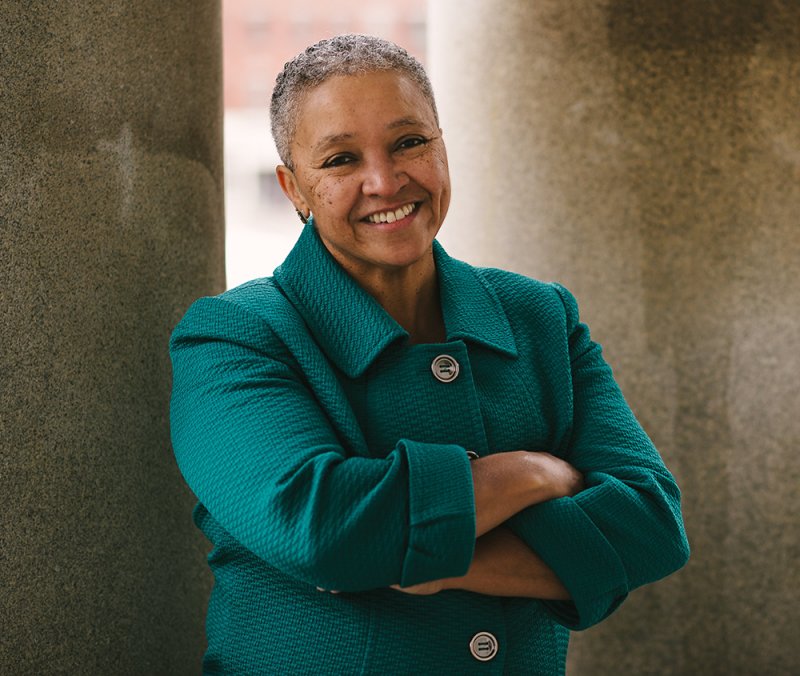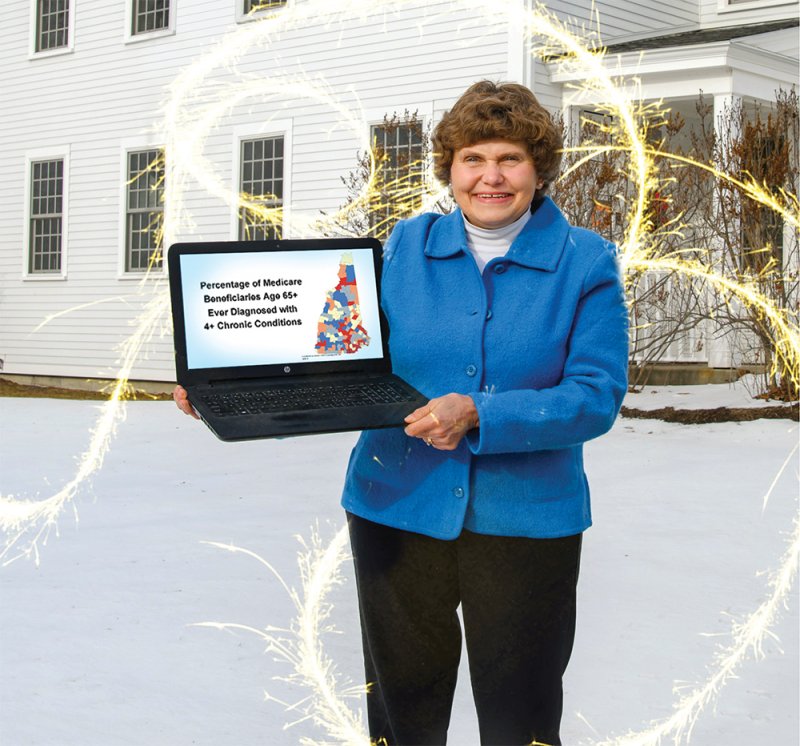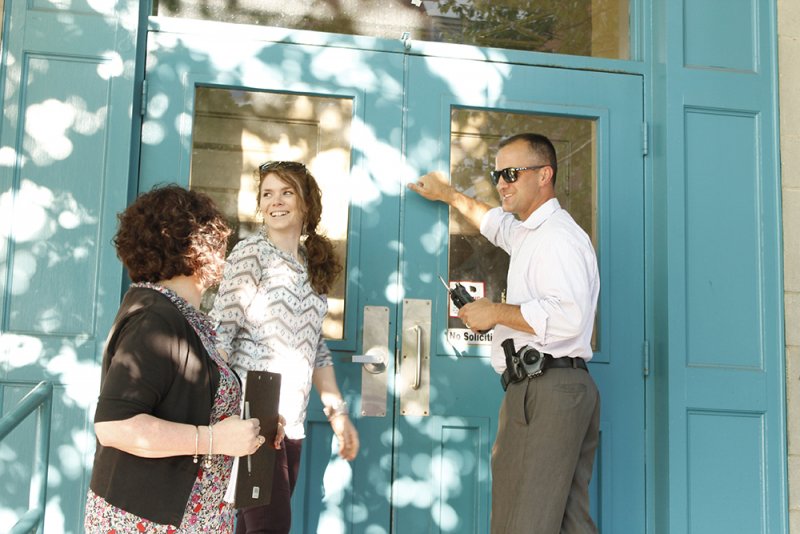
The Families First Health and Support Center, located at the Community Campus, funded by the Foundation for Seacoast Health. Courtesy photo.
Despite the challenges of a largely rural state, NH ranks fifth nationally for providing access to health care, according to U.S. News & World Report. However, when health care quality and public health are added to the mix, the state’s overall health ranking drops to 16th, well below the other five New England states. Key metrics impacting the score are Medicare quality, preventable hospital admissions, rates of obesity and mortality for adults and infants.
Improving outcomes takes investment. And a handful of local foundations are investing more than $50 million annually into health care throughout the state. Rather than throwing money at immediate needs or filling gaps where state funding falls short, foundations are using their funding to push government and providers toward a holistic approach to health care by developing systems and policies aimed at preventative health care. Beyond simply adding dollars to the front lines, they fund coalition-building, collaboration and research to drive better policy.
The NH Charitable Foundation is the largest donor-driven community foundation in the state with more than $750 million in assets and distributing approximately $45 million in grants, program support and scholarships annually. More than 40% of those grants are in the area of health and well-being. Anne Phillips, director of grantmaking at the foundation, says while the organizations on the ground make a big difference, “Even as you provide money for direct services, more will be needed tomorrow and the day after and the day after that.” she says. “When you change policy or systems, you can impact the entire community, so we look for ways in which we can invest and use limited resources to have a broader impact.”
Taking a wider view and being strategic also factors heavily into the grant-making decisions of the state’s major health care conversion foundations. (Conversion foundations are formed when a nonprofit hospital or insurer becomes a for-profit entity.) Chief among them in NH is the Endowment for Health, which was formed when Blue Cross Blue Shield NH became part of Anthem. The endowment has about $86 million in assets and distributes about $2.8 million annually.
 Yvonne Goldsberry (pictured), Endowment president, says, five years ago, its board redirected the organization from responsive to strategic grant-making, focusing its investments in children’s behavioral health, early childhood, health equity, healthy aging and health policy. “The dollars spent in health care are so huge, we felt it was better to focus on advocacy, policy and systems change than to pay for services,” Goldsberry says.
Yvonne Goldsberry (pictured), Endowment president, says, five years ago, its board redirected the organization from responsive to strategic grant-making, focusing its investments in children’s behavioral health, early childhood, health equity, healthy aging and health policy. “The dollars spent in health care are so huge, we felt it was better to focus on advocacy, policy and systems change than to pay for services,” Goldsberry says.
The NH Children’s Health Foundation, which has about $26 million in assets and distributes between $800,000 and $1 million annually, also is looking to be proactive. Executive director Gail Garceau says, “When you get in on the front end, you can have more impact.”
The Foundation for Seacoast Health, formed when Portsmouth Hospital was purchased by HCA, was created to improve health and well-being of Seacoast residents. With about $40 million in assets, the organization distributed about $300,000 in 2017 in grants and scholarships, but also provided $1.1 million to fund the Community Campus, home to eight unaffiliated nonprofit programs that pay below market rent. Among those organizations is the Families First Health and Support Center and the Krempels Center, which offers programs to assist people living with brain injuries.
Getting Off to the Right Start
One strategy for improving the health of NH’s residents is to make sure they have healthy childhoods. Patty Baum, NH Children’s Health Foundation program director, says by using a prevention lens and focusing predominantly on children ages 0-5, the organization is finding ways to have more effect. “Where can we utilize dollars in ways that have a lasting impact versus just a one-off?” she says. “By the time people are walking into a doctor’s office, unless it’s preventative [care], you are already downstream. Working upstream, using a policy, system or an environmental approach can lead to lasting change.”
The NH Children’s Health Foundation, the Endowment for Health and the NH Charitable Foundation commissioned two studies in the past two years by the Rand Corporation to examine costs and benefits of early childhood investment and determine how to be strategic with those investments. Goldsberry says the endowment funded the research to help drive state policy.
“It is a delicate dance all foundations do,” she says. “Somebody has to be looking ahead to bring the discussion forward, to be open and available to start the next big conversation.”

Linda Minsinger is an advocate for improving NH’s communities using data from the Endowment for Health’s Healthy Aging Data Report. Courtesy photo.
The studies revealed that a number of children in NH face risks in early childhood that may compromise health development and the majority of public investment in low-income children and their families comes from federal funding sources. The reports also demonstrate the potential return on investment for preschool and home visiting programs for prenatal and
postpartum care.
Targeting early childhood trauma, NH Children’s Health Foundation fully funded a pilot for ACERT, or Adverse Childhood Experiences Response Team. The team includes a police officer, crisis services advocate and behavioral health professional, who can be deployed to help children exposed to violence. Teams respond as soon as the scene has been secured by the police to assess the situation and determine next steps that could be taken for the child.
Baum says the foundation funded the Manchester pilot at $50,000 per year for three years. In year three, the ACERT team saw an opportunity to apply for an $800,000 grant from the U.S. Department of Justice and the foundation agreed to fund a grant-writer position to leverage the federal dollars. Using what was learned in the pilot, the foundation will fund ACERT programs in Nashua, Claremont, Manchester and Coos County. In Concord, Granite United Way is taking the lead in year one to fund ACERT, Baum says.

Members of an Adverse Childhood Experiences Response Team (ACERT), responding to a call. Courtesy of the NH Children’s Health Foundation.
One of the boots-on-the-ground partners in the ACERT program is Amoskeag Health. In June, Manchester Community Health Center, Child Health Services and West Side Neighborhood Health Center formally consolidated as Amoskeag Health.
Executive Director Kris McCracken says the NH Charitable Foundation is providing a grant to Amoskeag Health to support LAUNCH Manchester, which builds on the infrastructure created by Project LAUNCH (Linking Actions for Unmet Needs in Children’s Health), a federally funded program focusing on children from birth to 8 to address cognitive, behavioral and emotional development issues.
“The goal is to identify potential issues early, get children screened and connected to appropriate services,” McCracken says. “One of the most successful components is a behaviorist working in early child-care centers run by Easterseals NH to support teachers in the classroom, as coaches, and work directly with the children helping them to manage their behavior.”

A child being helped through LAUNCH Manchester. Photo by Cheryl Senter, Courtesy of the New Hampshire Charitable Foundation.
Prenatal and perinatal care is another early intervention area in which foundations are investing. McCracken says a partnership between the NH Charitable Foundation and Elliot Hospital, where each committed $70,000 annually for two years, enabled Amoskeag Health to hire a perinatal substance use disorder coordinator to identify women who may be engaged in substance use and enroll them in prenatal care as soon as possible.
“We know that when it comes to neonatal abstinence syndrome, about half of the babies are born at Catholic Medical Center or the Elliot, meaning there is a concentration in Manchester and a real need to reach out,” she says of the disorder, a group of health conditions that occur when a baby withdraws from drugs they were exposed to in the womb. “The three goals of the program are to decrease women getting late into care, to provide support postpartum for women in recovery, connecting them to services for the first year, and broadening awareness of the services.”
McCracken says they also use barrier reduction funds to identify challenges these women face, such as finding child care, getting to appointments and getting transportation to recovery meetings. “The coordinator goes to where the patient is, they are in that sense community embedded. This is one way we are thinking differently about where people access health care.”
Baum says the NH Children’s Health Foundation funded an oral health study every five years. While the foundation does not typically fund services, the need for dental services was so deep in Coös county, the board agreed to fund both screenings in schools to identify the kids needing care and treatment if there was no insurance.
When the state oral health program learned that Ohio was using a Women, Infants, and Children (WIC) site to screen for oral health needs, the foundation was asked to fund a pilot program in NH.
“The risk is greater for pregnant women as infection can travel in utero; through the screening we can refer them to treatment,” Baum says. The state wanted to try it in other communities, so NH Children’s Health Foundation funded the pilot to provide data to demonstrate the need for a state-funded model. “Prevention is cheaper than paying for treatment years later,” she says.
Baum says they are happy to fund pilot programs to explore where need exists. “We support the research early on that informs our funding in the community. When the Federal Children’s Health Insurance Program (CHIP) was introduced [in the 1990s], New Hampshire was the only state that would not put money up to get the federal match,” Baum says. “Then-Governor Jeanne Shaheen asked [us] to put up the funds. In year two, we proved the program was successful. That kind of piloting is in our roots.”
Taking the 30,000-Foot View
The largest initiative undertaken by the NH Charitable Foundation is NH Tomorrow, an investment of $100 million over 10 years, “to increase opportunity for New Hampshire’s kids, from cradle to career.” The four pillars of the initiative are early childhood development, family and youth support, education and career pathways, and substance use prevention, treatment and recovery. Tym Rourke, director of NH Tomorrow, says the foundation is uniquely positioned “to be a voice in the mix that can pause, take a 30,000-foot view and bring out information that helps everyone think bigger.”
He says long-term thinking was especially important in dealing with substance use disorder, noting the NH Charitable Foundation has an institutional commitment to addressing the issue that spans more than 30 years. In 1997, when opioid use was particularly acute in the western part of state, Oliver Hubbard, a chicken farmer and poultry breeder from Walpole, decided to make a multi-stage, $43-million gift to combat addiction.
Rourke says, at the time, there had been little funding, as “the state spent no money of its own and every dollar from the state was federal money passed through.” As a result, there was limited access to treatment.
Rourke says it would have been easy to justify using Hubbard’s gift for direct services, but the farmer wanted to create lasting and meaningful change by shaping public policy and addressing what he saw as a lack of state leadership. Hubbard’s gift gave the foundation a permanent baseline of $2 million to $3 million a year to address drug policy.
“We are not just making grants to combat the opioids, we are making grants to build a system,” Rourke says. “Our ability to be flexible in ways public systems can’t be is critical. If we build a system that only addresses opioids, we will eventually have a system no one needs.”
As there was no nonprofit policy organization working solely on substance use issues, the NH Charitable Foundation launched New Futures. The advocacy organization has increased understanding of substance use disorder, shaped public policy and played a key role in the passage of Medicaid expansion that included coverage for addiction treatment.
Rourke says by building public, private and nonprofit partnerships, the NH Charitable Foundation created a table where stakeholders felt like they had a voice and at the same time, the foundation was seen as a neutral convener. As the crisis escalated, there has been more innovation because people were sitting at the table together.
“In the time since we’ve had this fund, there is such an appreciation now for the ways SUD [substance use disorder] is connected to everything. The issue is so endemic, such a barrier to the future of our state that we have to lean in,” Rourke says. “[The fund] allows us to commit money, staff time, speak nationally and provide a voice that has been missing from the field of addiction—for the foundation to stand up and say recovery works. We are happy to have that megaphone.”
Rourke says NH cannot address workforce and economic issues unless grassroots groups roll up their sleeves to address addiction issues. Even as opioid deaths decline, meth use is increasing and alcohol has always been a problem. He adds that opioid epidemics are always followed by stimulant abuse due to addiction tolerance; a person needs more and eventually opioids won’t get them high anymore, so they turn to meth for a more intense high. He says drug cartels are a business and will always find a more potent product to bring to market.
“The disease of addiction isn’t going anywhere; like any other chronic illness, it will always be with us. How do we think about addiction as a disease? We have to have a health care system that is able to pivot,” Rourke says. “At the same time, we are just trying to achieve equity with other diseases. It should look like any other treatment plan—continuous monitoring, and a plan to get back to the life that you led. For too long it’s been outside.”
Building Healthier Communities
Foundations often use a public-health model, which addresses health or social problems by examining human factors, the characteristics of the source of harm, and the environment to identify causes and suggest possible interventions.
Phillips of the NH Charitable Foundation says by examining social determinants—the conditions in which people are born, grow, live, work and age—a solutions-based, “upstream” funding approach emerges. The NH Children’s Health Foundation is taking an upstream approach to obesity prevention work, looking at how to make communities more walkable and encouraging people to be more active. “This is a long-term cultural change,” says the foundation’s Baum. “We engineered activity out of our lives, so how do we get it back?”
She points out that Manchester has worked to make the city more walkable, striping pedestrian walkways and changing the pavement visually to give drivers a heads-up. These measures can make pedestrians feel safer getting to parks. One of the grants the foundation funded this year is to a regional planning commission to support “active living” policies and projects in the local planning process.
The Foundation for Healthy Communities is an affiliated organization of the NH Hospital Association that Vanessa Stafford, director of communications, says works with hospitals across the state to engage in programming that addresses quality of care, access to care and community prevention. She says the foundation does not have a large endowment so most programs are made possible by grants and partnerships.
The Behavioral Health Clinical Learning Collaborative, with support from NHCF and the Endowment for Health, is a two-year program designed to address the management and treatment of patients experiencing mental health crises in the emergency department setting, referred to as psychiatric boarding. Stafford says one of the “best practices” is universal screening for suicide using a national model and scale to recognize and prevent self-harm.
Capacity Building
One way in which foundations are shaking up NH’s healthcare landscape is by shifting away from restricted funding where grants could only be used for direct services.
At the Foundation for Seacoast Health, CEO Deb Grabowski says the organization has long-supported unrestricted grants.
“What nonprofits really need is funding to support their own mission, to be able to do long-term planning and build sustainability. With the Community Campus, we allowed eight organizations to put resources directly into programs benefitting people they serve, rather use those fund for operating expenses.”
Grabowski adds that organization also benefit from the resources at the Community Campus, such as shared conference rooms and onsite food service.
Phillips says that the NH Charitable Foundation’s community grants help build nonprofit capacity. “We looked at what are best practices and we realized what nonprofits need, and have a hard time getting, is unrestricted operating grants. State and federal money is quite often restricted.” She adds that giving multi-year grants frees up staff to focus on mission rather getting next year’s grant application ready.
McCracken of Amoskeag Health agrees. “When [NH Charitable Foundation] invests in things, it makes it possible for us to do our work, because you can’t generate revenue from these services … we’re hoping the investments in the model will show what works and eventually become covered services under Medicaid,” she says. “In New Hampshire, there are so few public dollars available that without the foundation, organizations like ours would not exist. This is a tough state if you are poor.”
But even as these foundations try to drive policy with strategic initiatives, they stop short of taking on the full responsibility of funding services that should be covered by the state or insurance programs.
Goldsberry of the Endowment for Health says the organization sometimes funds providers directly, but tries to avoid taking on the state’s responsibilities. “The role of government is something we talk about a lot versus philanthropy and private industry. We try hard not to supplant government. That said, our state is less resourced than others,” she says. “At times we work in partnership with various state officials, but again, not trying to supplant.”

 Current Issue - July 2024
Current Issue - July 2024